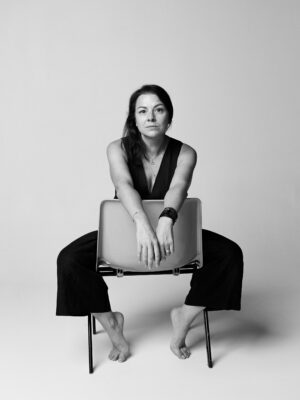Material Matters #1: Picking the Perfect Countertop for Kitchen and Bath
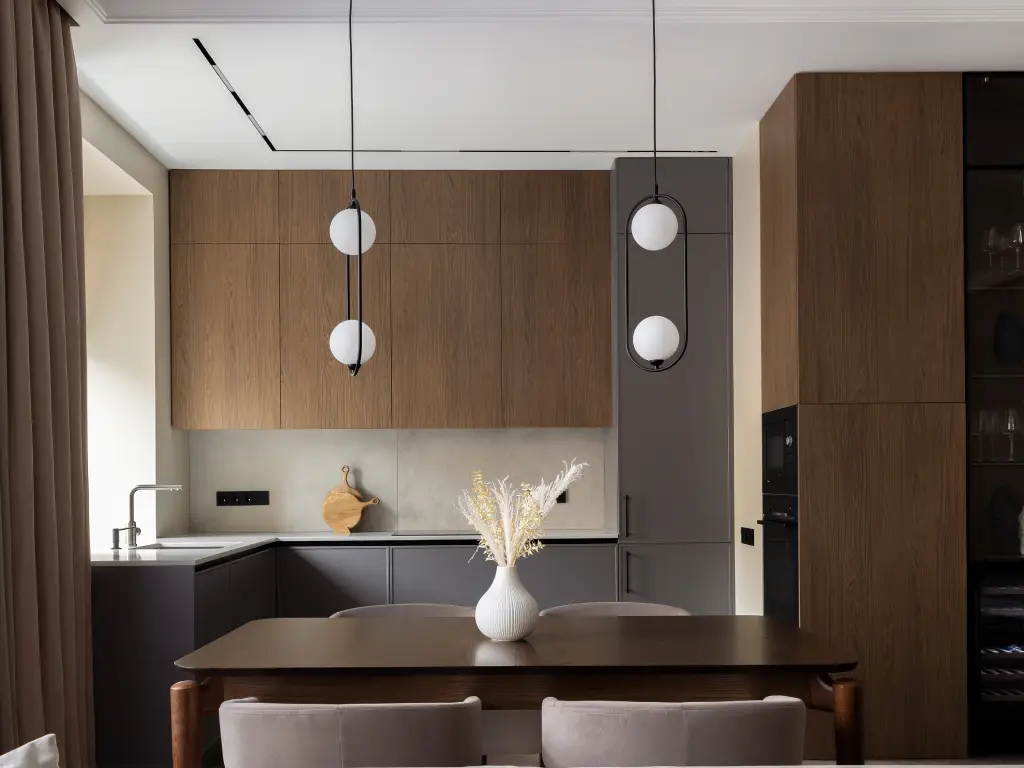
In our first issue of “Material Matters” Evgenia Chucharina, Architect and Co-Founder of Black Wall Interior shares her recommendations on choosing the ideal countertop.
When choosing a countertop, we usually think first about esthetics: the color, the texture, how it matches the cabinetry. But in real life, other things matter much more. In Israel’s hot and humid climate, with steam and sudden temperature changes in the kitchen and bathroom, the countertop has to withstand daily contact with water, knives, hot pans, and cleaning agents.
Here’s what you really need to keep in mind:
• Heat resistance — will it survive a hot pan straight from the stove?
• Moisture resistance — will stains or mold appear over time?
• Durability — how easily will it scratch, chip, or crack?
• Joints and seams — long kitchens almost always mean connections.
• Care and budget — sometimes the slab costs less than the installation itself.
1. Quartz — the Favorite in Israeli Kitchens
Quartz (Caesarstone, Noble, Quartzforms) is by far the most common choice.
Pros:
• strong and moisture-resistant;
• huge variety of colors and textures;
• easy to clean.
Cons:
• sensitive to very high heat — always use a trivet;
• slabs come in limited lengths, so seams are inevitable, and dirt tends to gather there.
Quartz is most often paired with stainless steel or composite sinks, usually installed undermount — it’s both practical and visually clean.
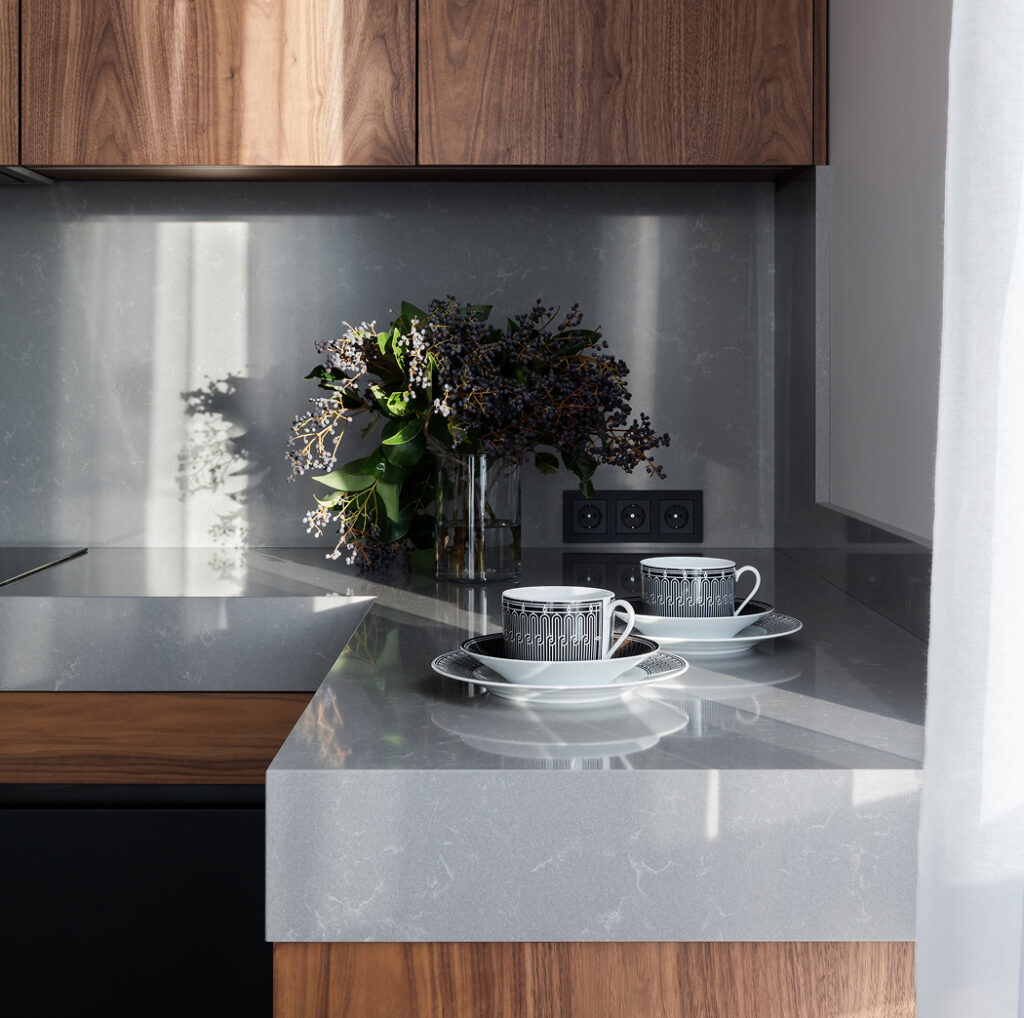
2. Natural Stone — Stunning but Demanding
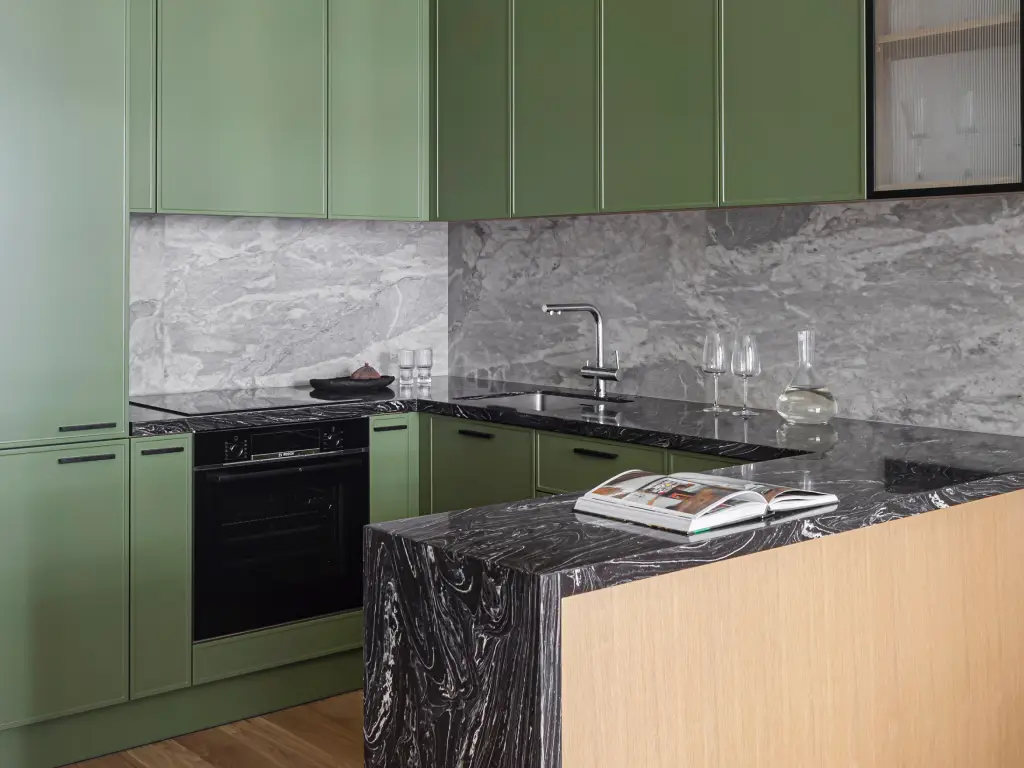
Marble, granite, and travertine look spectacular, especially in premium interiors.
What people love:
• every slab is unique;
• excellent heat resistance.
What makes it tricky:
• marble and travertine absorb liquids and easily stain from coffee, wine, or oil;
• they need regular sealing and protective treatments;
• very heavy, installation is expensive.
My take: if you’re set on natural stone, I recommend choosing granite or quartzite. Quartzite is more expensive, but it’s stronger and far more practical than marble. Many quartzite varieties look almost identical to marble, so you still get that airy, elegant look — but without the constant worry about stains.
3. Porcelain (Dekton, Neolith, etc.) — A Modern Trend
Thin but extremely strong slabs, often used not only for countertops but also for cabinet fronts.
Pros:
• completely resistant to water and heat;
• almost impossible to scratch;
• sleek, modern, minimal look.
Cons:
• installation is more expensive and complex than quartz;
• edges can chip if hit hard;
• large slabs are difficult to transport and handle.
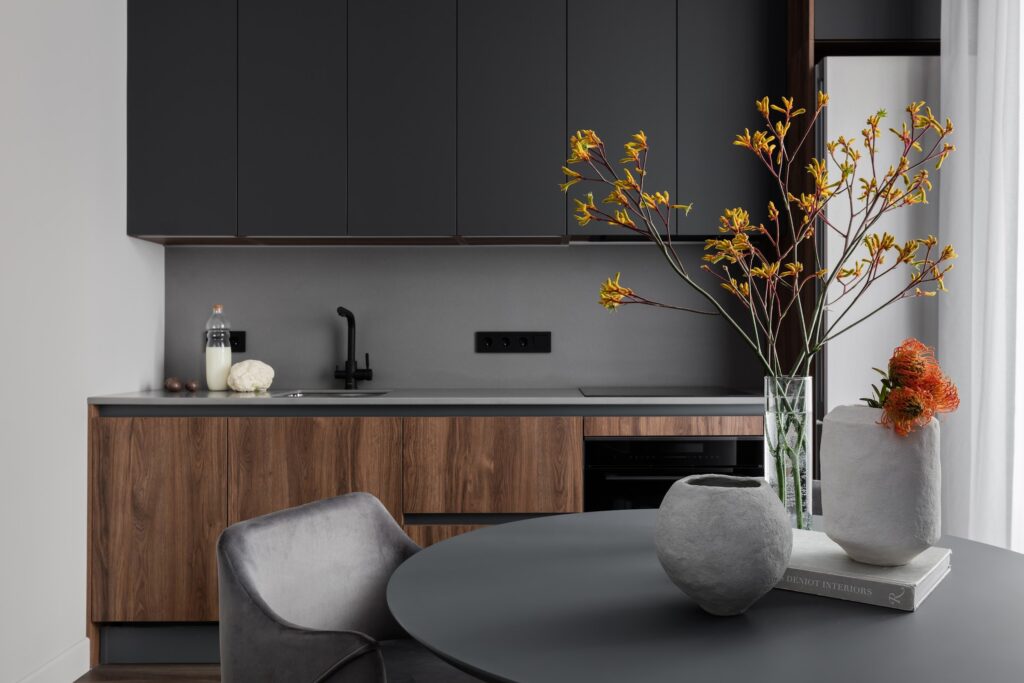
4. Concrete — For Bold Interiors
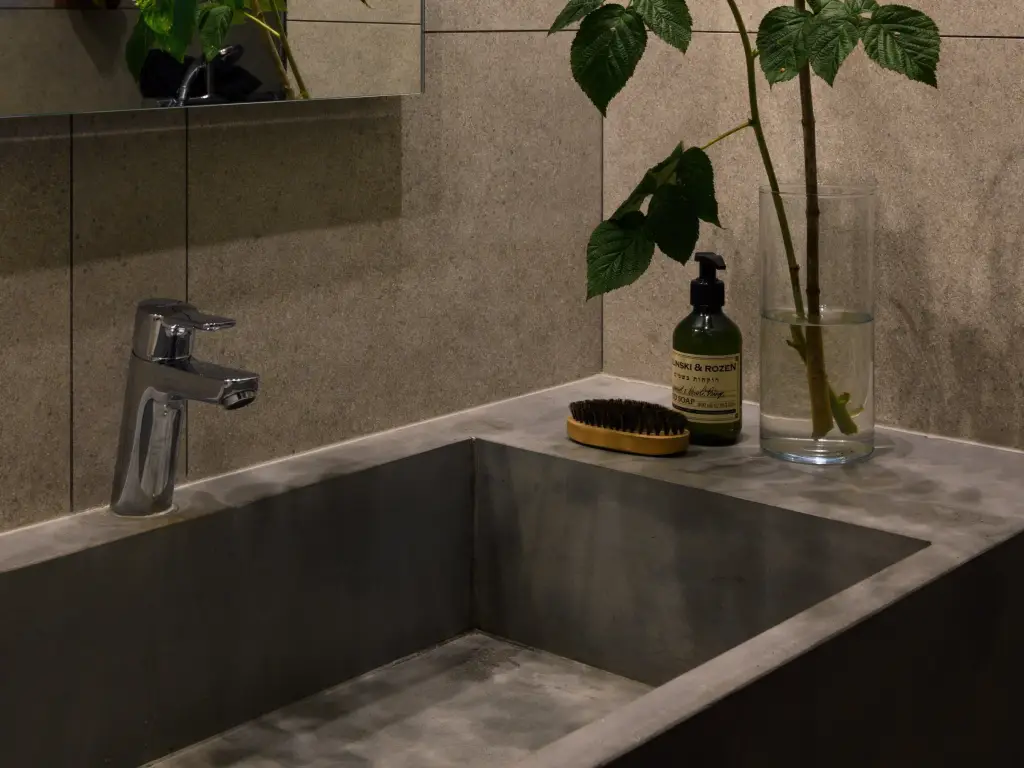
Concrete has moved far beyond “rough” construction work and now appears in premium interiors. It looks especially good in loft or minimalist spaces.
What’s great:
• can be poured in custom shapes or even with an integrated sink;
• strong, expressive, and unique look;
• long-lasting when properly sealed.
What to watch out for:
• extremely heavy — needs strong support;
• porous: absorbs water and grease unless sealed;
• requires regular re-sealing;
• prone to microcracks over time.
5. Acrylic Countertops (Corian and similar)
Acrylic is a man-made stone based on resin.
It’s biggest advantage:
• the ability to create seamless surfaces and even cast the countertop together with the sink as one piece;
• Acrylic is easy to repair — small scratches can be sanded out.
Cons:
• it’s sensitive to heat and scratches easily, so it requires gentle care.
In Israel, acrylic is used less often in kitchens but is quite popular in bathrooms thanks to its smooth and hygienic surface.
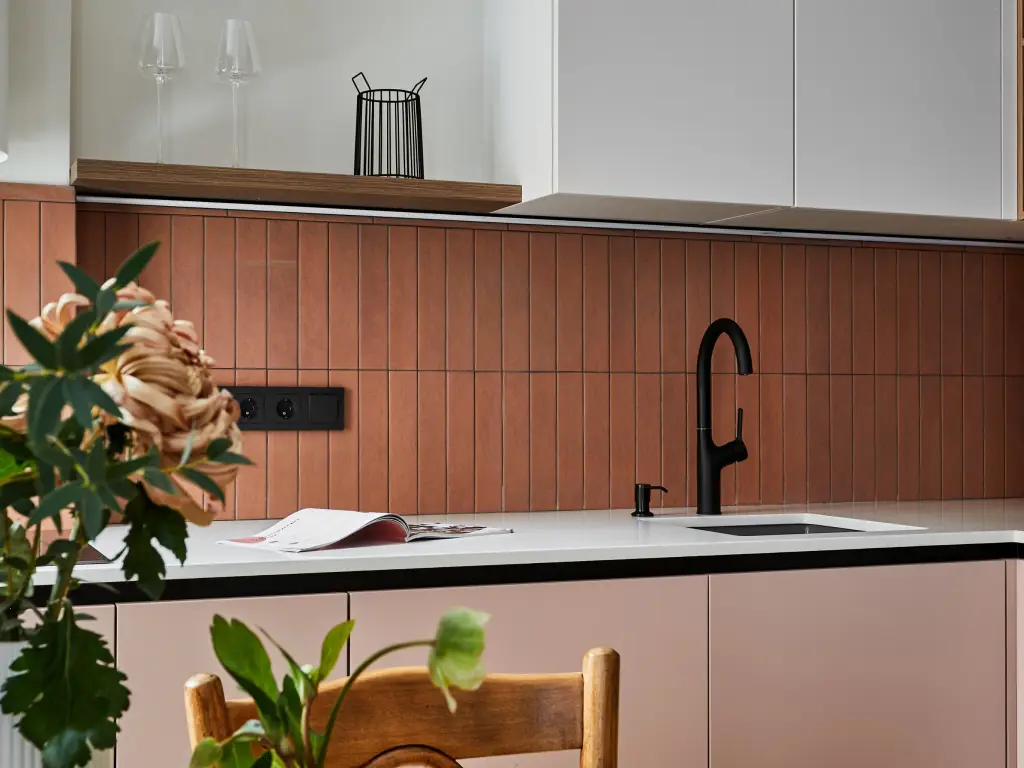
6. Other Options

• Laminate — inexpensive, but in Israel’s climate it swells and degrades quickly.
• Solid wood — warm and beautiful, but cracks easily in humidity and needs constant oiling.
Final Thoughts & Designer Tips
• For kitchens, quartz or porcelain are the most reliable choices: practical, durable, and familiar to local installers.
• For bathrooms, concrete and natural stone can work well, while quartzite is a fantastic option for high-end projects.
Designer’s tip:
Always ask your installer exactly where the seams will be and how they will be finished. Even the most expensive material will lose its appeal if the joints are poorly done.
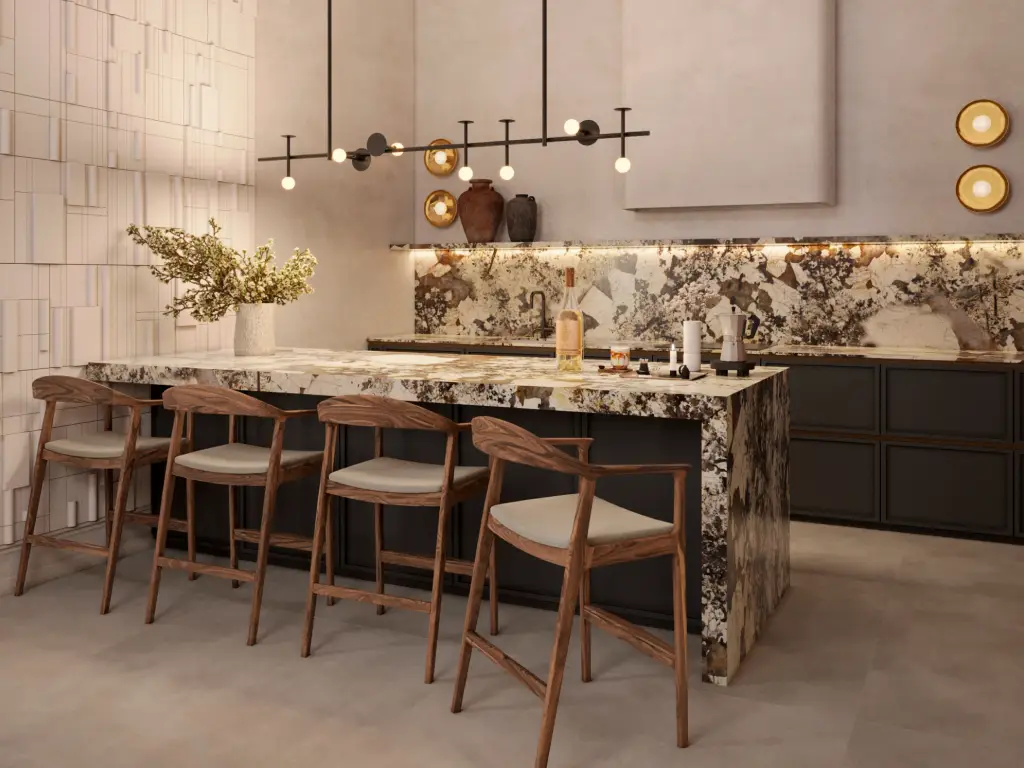
On sinks:
I recommend choosing undermount installation if your budget doesn’t allow for an integrated sink made from the same material as the countertop. In Israel, drop-in sinks are very common, but they leave the rim visible on top of the counter — which means a seam, and that really spoils the overall look.
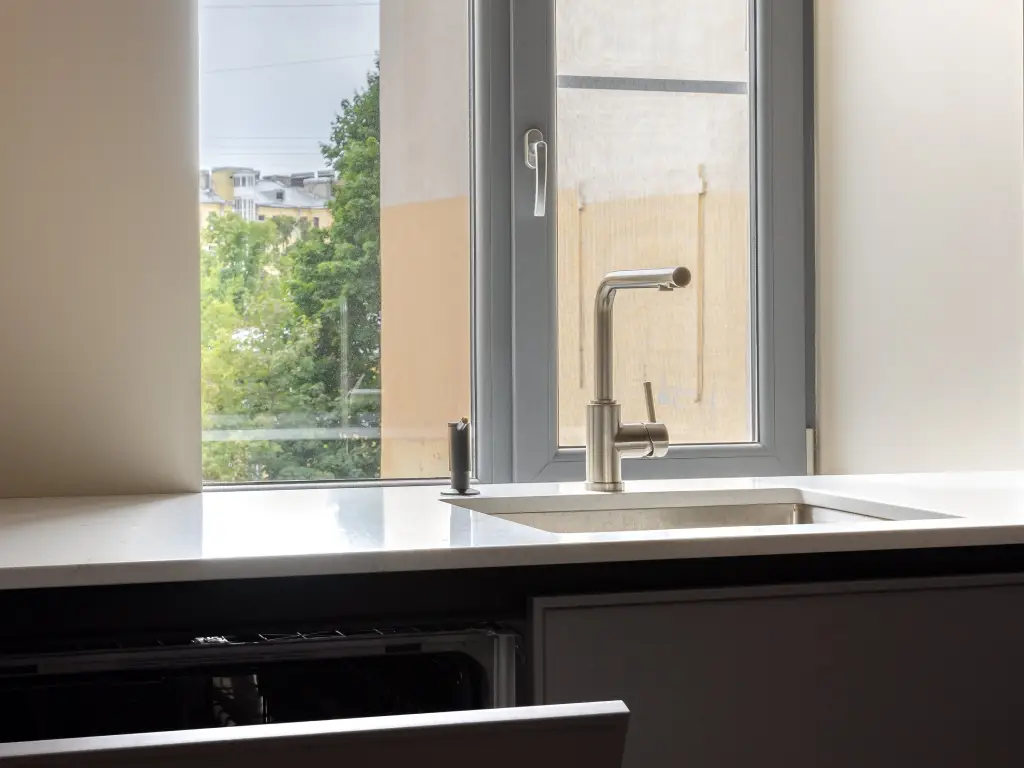
All photos are studio projects, provided by Evgenia Chucharina.
I am an architect and designer with international experience and two Master’s degrees in architecture and design. I love complex and new challenges — they are the only way to grow and reach the next level.
I studied and traveled extensively, and I believe that in our profession, a broad visual experience is one of the most important tools. I especially value working with historical buildings and unique spaces, as every house carries the story of a family, and the architect’s role is to continue it.
I prefer eclectic interiors — a mix of styles where one can truly live in harmony, rather than follow “pure” canons.
Evgenia Chucharina, Architect and Co-founder of Black Wall Interior
